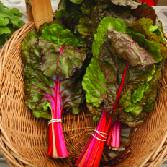How to Use Cover Crops for Fall Garden or Landscape Preparation and Winter Soil Protection
As each growing season wraps up, your soil deserves a little extra care. This is where cover crops come into the picture. These unsung heroes replenish nutrients, suppress weeds and help your landscape thrive, whether you are maintaining a spacious homestead or tending a compact backyard garden.
What Are Cover Crops & Why Plan Now?
Cover crops, also known as “green manure,” are crops specifically chosen to benefit and improve the soil. In fact, they generally are not meant to be harvested—instead, they are grown to help crowd out unwanted growth, reduce soil runoff, restore key organic matter, and build a healthier foundation for your next planting season.

Many cover crops perform well when sown in late summer or early fall, allowing them to establish quickly in cooling temperatures and condition the soil before winter sets in. This proactive approach supports healthier, more productive planting in the following spring.
With a wide variety of cover crop seeds available, it is easy to find options suited to your region, soil goals and seasonal timing—including fall-friendly varieties that can be planted now to thrive in the cooler months ahead. Here are a few standout cover crop examples from Outsidepride to consider for your fall garden preparation:
· Hairy Vetch cover crop seeds excel when established in fall, improving nitrogen and phosphorus levels while supporting beneficial insects. Its sprawling growth helps inhibit weed establishment and insulates the soil over winter.
· Crimson Clover is a cool-season winter annual that is best seeded in late summer to early fall, typically one to two months before the average frost date. This gives it enough time to establish, protect against erosion and build winter resilience.
· Subterranean Clover, also called subclover, offers low-growing, self-reseeding legumes. They grow best during late summer or early winter, going dormant during the coldest months.
·
 Daikon
Radish cover crop seeds are a deep-rooted “bio-drill” that breaks
up compacted soil, enhances drainage, and scavenges nutrients. Planted in late
summer, it quickly establishes before winter and decomposes in place to improve
spring planting conditions.
Daikon
Radish cover crop seeds are a deep-rooted “bio-drill” that breaks
up compacted soil, enhances drainage, and scavenges nutrients. Planted in late
summer, it quickly establishes before winter and decomposes in place to improve
spring planting conditions.
Looking ahead to warmer seasons, Outsidepride also offers excellent cover crop options for spring and summer planting. Red Clover is a nitrogen-fixing, weed-suppressing legume that can be frost-seeded into standing winter wheat or barley in late winter or early spring.
For summer, Buckwheat is a fast-growing cover crop that excels at improving soil aggregation, making it a favorite for quick turnaround between growing cycles.
The Benefits of Cover Crops
Cover crops are a time-tested solution for enhancing soil performance in gardens, raised beds and large agricultural spaces alike. By naturally building soil fertility, reducing erosion, keeping weeds down, and supporting pollinators, they offer a range of ecosystem benefits that extend well beyond a single season—making them a smart, sustainable addition to most any planting plan.
Improves Soil Fertility and Structure
One of the most valuable benefits of cover crops is their ability to enhance soil structure and overall health. As they grow, these plants generate dense biomass that, when incorporated into the soil, increases organic matter and boosts nutrient content.
Austrian Winter Peas are a smart choice—they establish quickly in cool weather, help fix nitrogen, and build organic content for the next growing season. Another great option is our Berseem Clover, which performs exceptionally in heavier or wetter soils and establishes fast.
Prevents Erosion During Fall and Winter Rains
Fall and winter rains can easily wash away topsoil, especially in bare garden beds. Planting cover crops like Annual Ryegrass or Sweet Clover helps create a protective canopy over the soil. Their fibrous root systems anchor the soil in place, reducing runoff and nutrient loss throughout the colder months.
Weed Suppression
Fast-growing cover crop varieties can outcompete weeds by crowding them out and absorbing available nutrients. Ryegrass, Hairy Vetch and Buckwheat are particularly effective at minimizing unwanted weeds.
Rye, in particular, exhibits allelopathy, releasing natural compounds into the soil that inhibit weed germination and growth.
Pollinator Support
Beyond benefiting the soil, cover crops can also provide crucial support to local pollinators. Buckwheat and Phacelia produce nectar-rich blooms that attract bees, butterflies, and other beneficial insects.
These pollinators not only help increase fruit set in nearby crops like squash and tomatoes but also play a role in natural pest control by supporting predatory insect species.

How to Plant and Grow Cover Crops from Seed
It is easy to plant and grow cover crops from seed. Follow these expert tips from Outsidepride to ensure your cover crops establish successfully and deliver long-lasting benefits:
1. Select the Right Seed: Consider seasonal timing and your overall goals when selecting the cover crop seeds. It is key to select a seed that is suited for your region and season. Once you've selected the right cover crop for your garden goals and growing season, planting is a simple and rewarding process.
2. Prepare the Soil: Loosen the soil using a garden rake or tiller. If there is any leftover vegetation in the area, use a metal rake to remove all debris and smooth the area before seeding.
3. Seed and Rake: When seeding cover crops, evenly distribute the seed using either a seed spreader or your hand. For the best coverage, make two passes over the garden in opposite directions—once vertically and once horizontally. Be sure to follow the recommended seeding rate provided on the seed packet for optimal results. After seeding, lightly rake the seed into the soil to protect it from birds, insulate it from cooler temperatures, and promote strong soil contact. Smaller seeds require only a gentle raking, while larger seeds may need to be covered more deeply.
4. Initial and Continued Growth: Plant cover crops early enough to allow at least four weeks of growth before cold weather. If your soil is dry, irrigation will assist with keeping the soil damp to germinate the seeds. Cover crops will resume growth in spring after frost has passed. These are very low maintenance plants and can be left alone until you are ready to plant your garden.
5. Terminate the Crops: Before the crop begins to produce seeds, cut it off at the base using a mower, lopper, rototiller or weed eater. Let the plant material decompose for about a week before working it into the soil. After another two to three weeks, your soil will be refreshed and ready for planting herbs, flowers, vegetables or other Outsidepride seeds!
Keep in mind that growing conditions vary from region to region and can be affected by weather and soil. Understand your space, and adjust your planning and seeding accordingly.
Ready to support your soil naturally? Now is the ideal time to start planning your late-summer and fall seed planting. By adding cover crops to your seasonal routine, you can naturally improve garden soil health and see long-lasting results with minimal maintenance.
As part of your fall garden preparation, choosing high-quality seeds from Outsidepride makes it easy to find the right cover crop for your climate and gardening goals.
Explore our website to discover a wide variety of cover crop seeds—and find the perfect match for your space, soil, and season.































